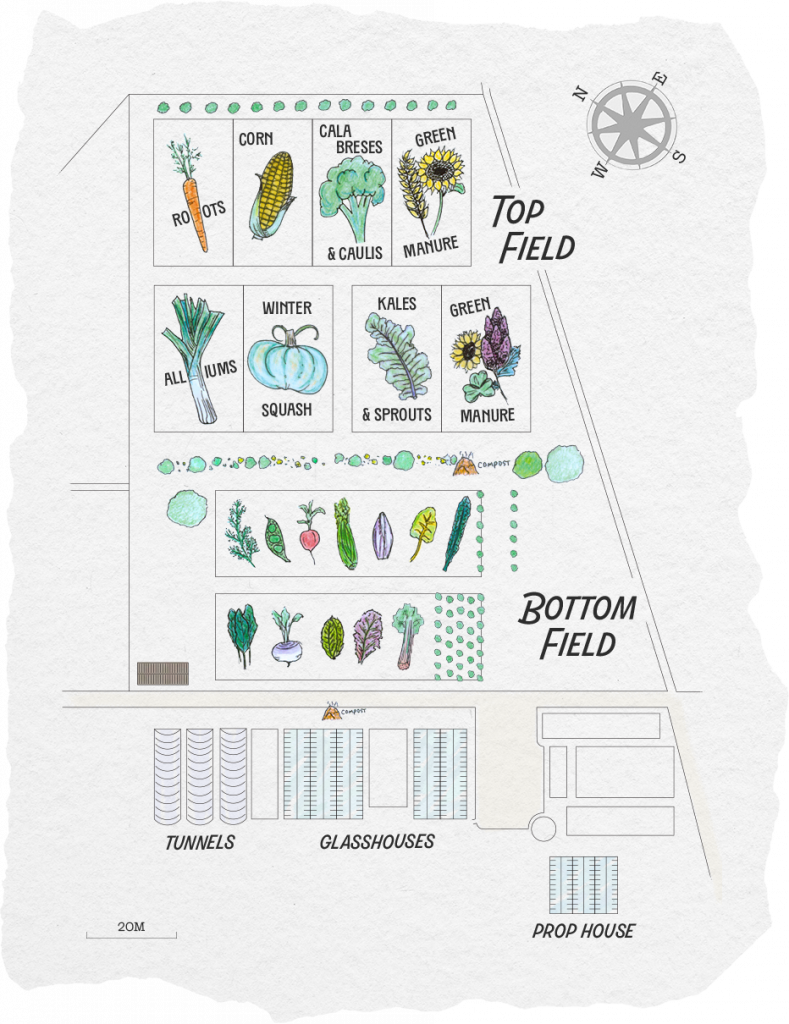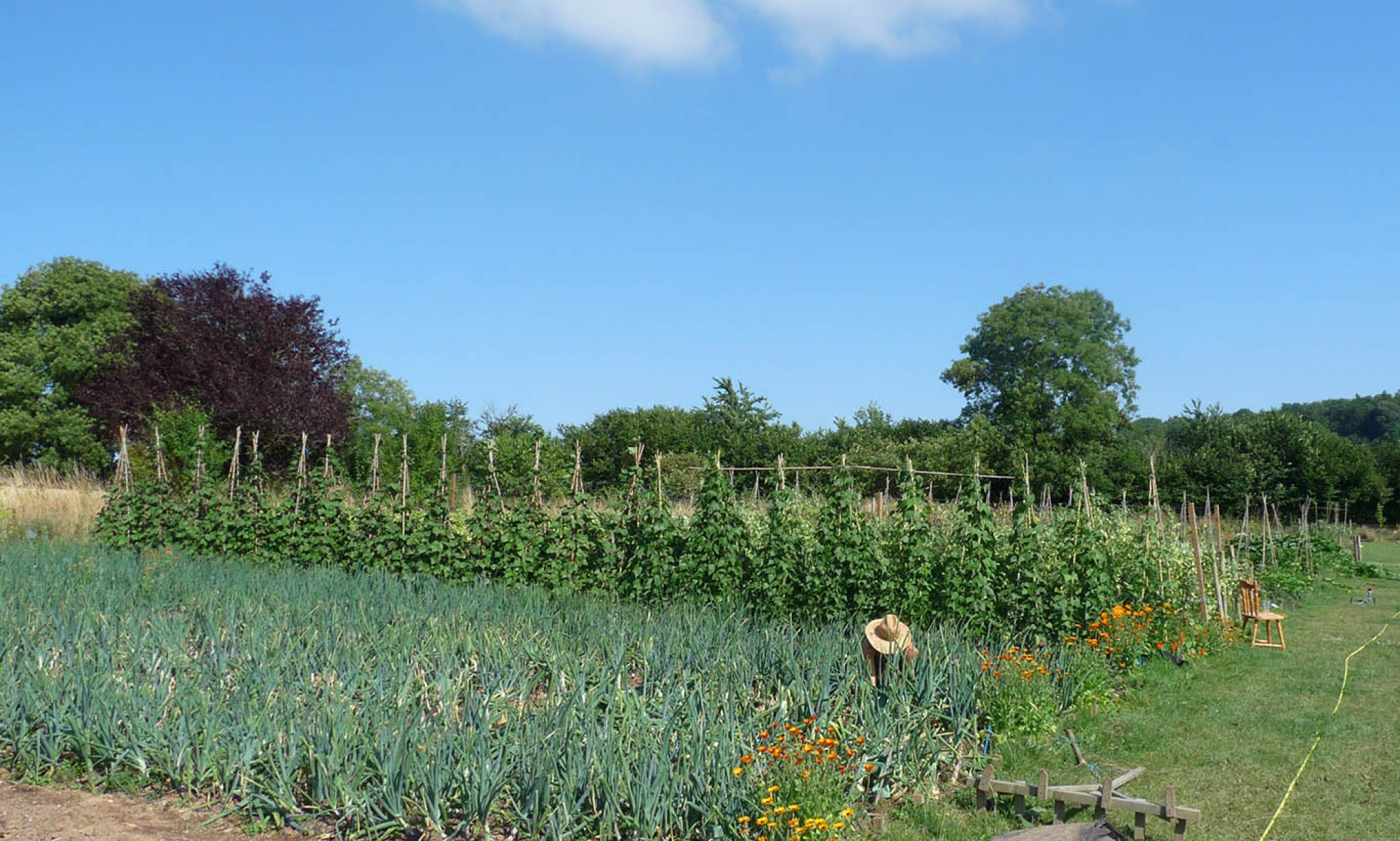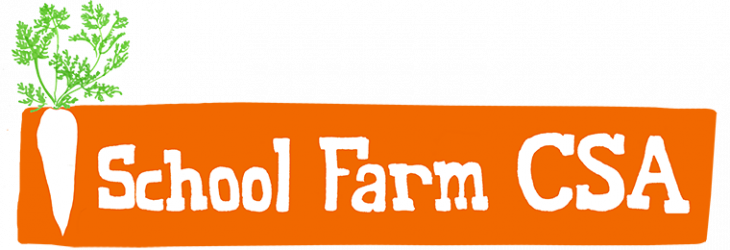At School Farm, we grow by fairly simple ethics. We provide our members with delicious and diverse organic fruit and vegetables, grown ecologically and mostly by human hand. We leave some space for the wildlife that lives around us, and never use any chemicals or inputs that could damage them. We try to disturb the soil as little as we can, and we try to make our vegetables as accessible as possible for our community.
Working to these principles is one of the many advantages that comes from farming a smaller area than most farmers. Conventional farming nowadays tends to work on the mantra ‘go big or get out’. We prefer ‘small is beautiful’. And you can see the difference when you visit our farm – in peak summer you will see growing almost every vegetable it is possible to grow in the UK, the field is alive with insects foraging nectar from the wildflowers and the green manures, and the hungry birds are in turn foraging them. This style of growing proves that a farm can be hugely productive while still remaining in balance with the ecology that it is part of. That’s why we love it!
Our system has three main parts – the Top Field, the Bottom Field, and the covered cropping which consists of old Victorian-style glasshouses and our polytunnels.

In the covered cropping, we grow our more heat and sun loving crops, such as tomatoes, cucumbers and aubergines. That’s in the summer, and in the winter we have all the mustard salads, cresses, chicories and higgledy-piggledy bits that make up our winter salad mixes. Our polytunnels also host the majority of our seed crops. After being brought in from the field and out of the rain, they flower brilliantly and then go to seed, multiplying their amount of life many times over, and which then go on to grow all across the country. These seed crops are a big part of what we do. We care a lot about seed sovereignty, and making sure that people have locally grown, locally adapted sources of seed for when the climate-related challenges of the future make themselves known.
The bottom field is smaller than the top field, and has its own rotation focusing on the less space hungry crops. Think salads, herbs, chicories, radishes, turnips, beans, peas and the like. The top field has enough room to grow the big stuff – brassicas, root veg, squash, corn and onions. We also have a great big section of green manure, a diverse mix of grasses, clovers, herbs and flowers which build soil structure, capture carbon and nitrogen, and produce nectar and seeds for the birds and the bees. Out in the field is where we have to think about how best to grow to the context.



Till? No till? The answer is min-till.
While we want to minimise the amount of tillage we do, in the field (the top one in particular) it would take far too long, and be far too tiring, to do the cultivation all by hand, so we have the help of our walking tractor, Bertha. In spring she forms the beds and lightly rotavates them to make them ready for planting out the crops. In the glasshouses and tunnels however, which are much smaller in area, we try to do it all by hand. We use a broadfork – effectively a huge garden fork that breaks up compaction – then add compost, hoe, and rake it smooth. Over the years this has given us a deep, fertile black soil full of worms and insects which give us beautiful crops every time. We make our own compost from all the organic matter we can get our hands on, and we get horse manure from the farm next door to give fertility to the big crops in the top field.



Once summer is done and we have reaped the reward of all our hard work in spring, we slowly put the farm to bed. A big part of ecological farming is making sure that over winter you don’t have bare soil exposed, primarily to stop nutrients leaching, but also because it means there are no living plants to protect the soil from the rain and to feed the soil microorganisms. We like to leave our green manures over winter where we can to provide that protection and food, and where we can’t we put the ground snugly to bed under plastic sheeting which does a similar, if slightly less effective, job. Leaving standing seedheads over winter is a key source of food for birds as well. That’s why we have seen so many beautiful visitors including bullfinches, goldcrests, long-tailed, blue and great tits, and big flocks of fieldfares.
The sheer abundance of life that we see regularly on the farm is all the confirmation we need that we are doing something right. From the worms in the soil, to the toads and voles, to the kestrels hovering overhead, they are the best sign that the way we are growing is providing not only for our veg boxes, but for all the other living creatures around.
The best way to believe it is to come and see it. If you want to see how we grow and get involved in the farm, come to our events and open days, or volunteer and work alongside us, and you can learn first-hand how we are running the place. Everything is better when shared, and our farm is no exception!

